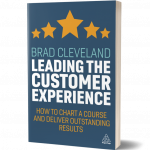When my iPhone battery life began to diminish, I searched for “Apple support phone number.” While Apple doesn’t hide their phone number, I scrolled down the page to see what other options were available. It was a Monday morning, and I knew they would be busy. I navigated to the header—Need service or support? Start your request online, and we’ll find you a solution—then selected my product and problem. I was then offered four options: bring the product into a store, send it in for repair (which I could schedule online), initiate a chat, or initiate a call. Current estimated wait times were provided for each channel. The automated tool issued me an “issue ID,” and when I initiated a call, my product/problem selections were passed along to the rep.
Why can’t all companies do this? The truth is, it’s difficult to get customer service basics right, and many organizations don’t. While customer service catastrophes still make headlines, run-of-the-mill customer service annoyances are still maddeningly common.
Resolving customer service frustrations is often among the first stops for any organization working to improve customer experiences. There are five universal frustrations that can point you in the right direction: don’t make me wait, make it easy to access service, provide me with a knowledgeable and helpful service team member, create easy processes, and know who I am.
- Don’t make me wait
Waiting in line, waiting for a callback, waiting for a return to be processed, an order to be delivered, or an application to be approved. Customers don’t like waiting. When left to wait too long, they’re more likely to go somewhere else next time (if they can), tell their friends and family, and take it out on the employee who ends up helping them.
How long is too long? The answer can vary. Benchmarks provide useful data points but don’t reflect your unique customers and the issues they are trying to resolve. An insurance company may find their customers are less wait-tolerant to file a claim, but more wait-tolerant to check on a payment. A medical center may find customers expect the contact center to be open before the day’s first appointment at 5:00 am.
The great news is this information is available if you’re willing to go to the trouble to get it. Survey customers about wait times. Correlate wait times with customer satisfaction data by customer type and service. Analyze the percentage of customers who abandon along with wait times. These steps will add up to a more complete picture. The bottom line: are your customers happy with the wait when they need help? In a customer-centric organization, this matters more than the length of the actual delay.
- Make it easy for me to find help
Making it easy for customers to find help encompasses the entire customer journey, including customer communications, self-service, interactive voice response (IVR), and digital channels. Consider a recent problem you experienced. How easy was it to find the right place to direct your question—a dedicated Twitter profile, a phone number, an email address, a chat link? Was it a channel you prefer? Did you get to the right resource easily, or did you get transferred or moved to another channel? Did you feel confident you were in the right place?
Making it easy to find help takes thought and design. Those who design communications, phone menus, web pages, and mobile apps will need to anticipate when, why, and how customers will contact the organization. A solid customer access strategy, which we’ll discuss in the next section, is an important tool.
- Provide knowledgeable and friendly customer service staff
When things go wrong, your customers will turn to your employees for advice, support, and resolution. Customers will form an opinion of the company based on those they interact with. That is why hiring capable employees, training them well, giving them the tools they need, and empowering them to deliver good service is so important.
It is easy to obtain customers’ perceptions of the helpfulness of your employees. Customer satisfaction scores, complaints, and employee observations can help you determine which customer service team members shine, and who needs additional training or coaching. Analysis of feedback and observations may also alert you to the need for improvements in recruiting and hiring, training and coaching, even goals and metrics, to support the service customers want.
- Create customer-friendly policies and processes
Processes are at the core of service delivery. Processes largely determine how long customers wait, how easy it is for them to access help, and virtually every other aspect of service and support. Even the most dedicated customer service team members are crippled when they have to represent inconvenient policies or work within cumbersome processes. And we know the majority of escalated complaints are due to issues that needed multiple contacts to resolve or required the customer to navigate complicated processes.
As you map customer journeys, keep some goals in mind. You want customers to feel that getting to a positive resolution is easy and that you are there to support them. Gathering data on how well your processes are performing can take some digging. You may need to trace the customer over time, across multiple channels and departmental touchpoints. Technologies are getting far better. But in most cases, customer feedback and employee input will provide much of the information you need.
- Know who I am
Consumers expect a seamless experience when they move from one service channel to another—for example, when opening a ticket in an online portal and then calling about it. When customers call multiple times about a single issue, they expect the representative to know who they are and what’s happened so far. This means creating systems and methods to proactively identify customers. That will enable you to access their history, and track their journey through multiple contacts, touchpoints, and channels. From an experience perspective, your goal is for the customer to hear, “Hi Mr. Jones, I see you have an application started in our system. Are you calling about that today?”
Studies reveal these five frustrations as most common. But are they your customer’s frustrations? And to what degree? I encourage you to use this list as a starting point, to fuel your own customer service pain point audit.
One more recommendation: Don’t get too clever before you get the basics in order. To use a sports metaphor, these five areas are “blocking and tackling” (the fundamentals). But blocking and tackling is not easy. That’s why, whatever your sport, musical instrument, or craft, you worked on the fundamentals more than any other area. Over and over. That’s why the greats stress them. They’ll never be easy. This is an ongoing pursuit. Don’t get discouraged and don’t strive for perfection. Do keep working on them.

Excerpt from Leading the Customer Experience: How to Chart a Course and Deliver Outstanding Results by Brad Cleveland.



0 Comments